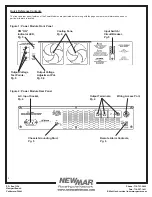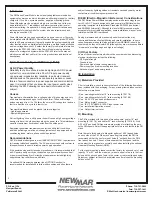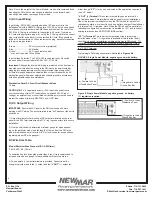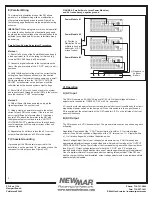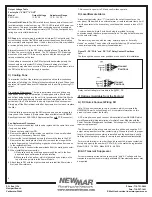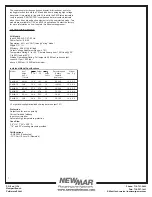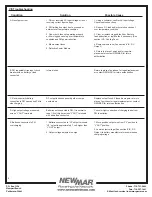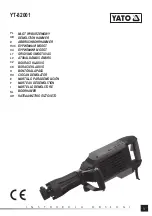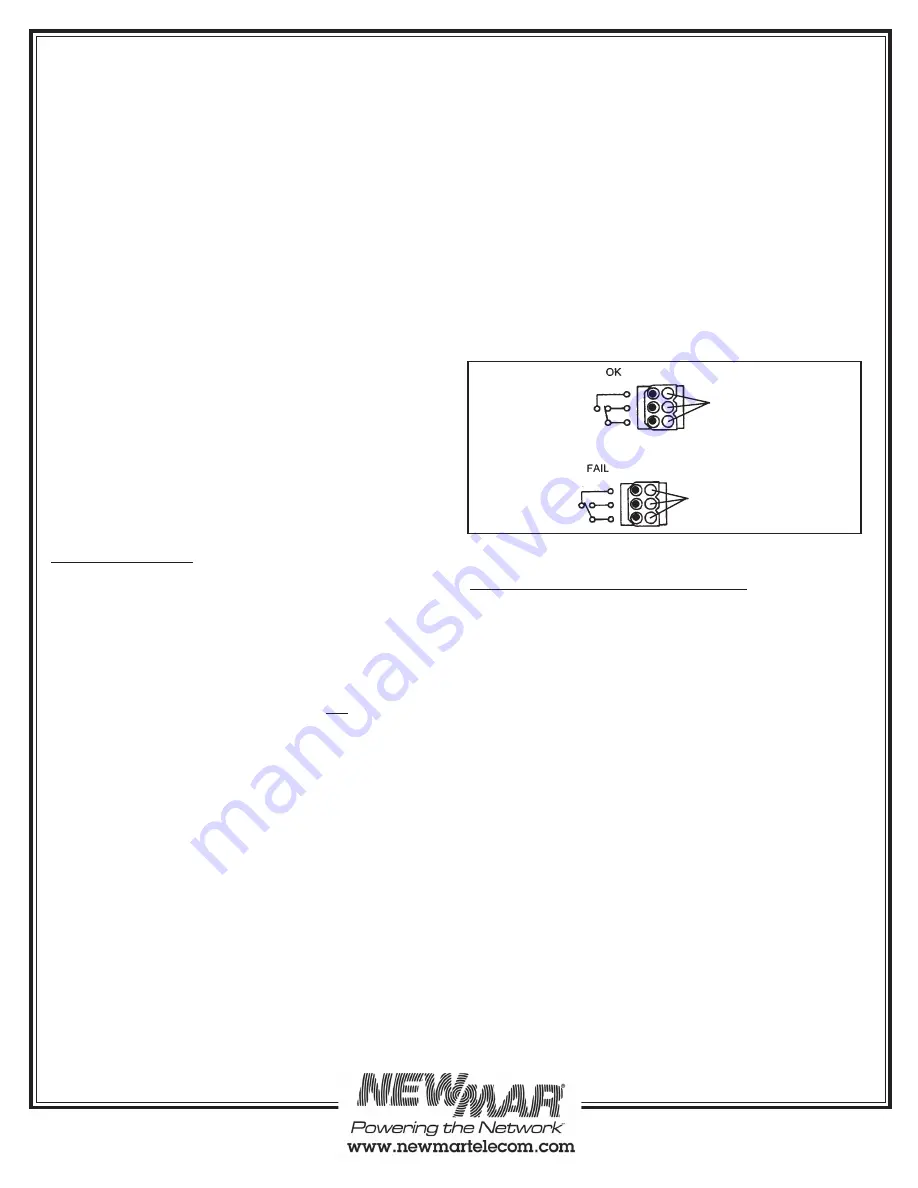
6
P.O. Box 1306
Newport Beach
California 92663
Phone: 714-751-0488
Fax: 714-957-1621
E-Mail: techservice@newmarpower.com
Output Voltage Table
Factory Set “V OUT” “V OUT”
Model
Output Voltage
Adjustment Range
PM-12-40A,
13.6V DC
12.2 - 15V DC
Current Limit Circuit:
The PM is rated for continuous duty at the current
level indicated by model number, e.g., PM-12-40A is rated at 40 amps con-
tinuous duty. To prevent overload when recharging severely discharged
batteries, current is limited at approximately 105 % of the continuous duty
rating by a current fold-back circuit.
DC Fuses:
d.c output wiring is protected by internal DC output fuse(s). The
current limiting circuit of the PM should prevent these fuses from blowing
under normal operating conditions. If the d.c fuse(s) blow, this may indicate
a reverse polarity hook-up or an internal short.
Always disconnect AC to the PM before checking fuses. To replace the
DC fuse, the cover must be removed. The DC fuses are ATC blade type
mounted on the small PCB. Be sure to replace with the same type and
value as indicated on the fuse.
If the battery is connected to the PM output with backwards polarity, the
fuses should blow to protect DC wiring. However damage to internal
components may also have occurred. If the replacement fuse blows, return
the PM to the factory for a thorough inspection.
C) Cooling Fans
To maximize the life of the internal components and to allow continu ous
operation at full rating, the PM employs automatic cooling fans. These fans
operate at full speed whenever AC is applied and the unit is producing DC
output.
Preventative Maintenance: The fan is a maintenance-free ball-bearing
type and does not require lubrication. It is equipped with a filter to keep
debris from being sucked into the unit. It is recommended that this filter be
removed and rinsed with water occasionally to ensure adequate air flow,
particularly if the PM is installed in a dusty or particle-filled environ ment.
Simply pry off the filter retainer with a flat tip screwdriver to clean or replace
the filter.
If the fan fails to operate when the PM is turned on and a load is applied,
it may need to be replaced. (Replacement fans available from NEWMAR.
Specify part number 999-1208-0, Replacement Fan with PCB connector.)
Fan Replacement Procedure
Note: It is recommended that both fans be replaced at the same time, even
if only one has failed.
1. Disconnect ac power from PM.
2. Remove the plastic fan filter retainer on each fan. Use a small slotted
screwdriver if necessary. Remove filters.
3. Unscrew the four philips head screws that secure the fans to the PM.
Remove the four white plastic stand-offs from each fan along with the
plastic finger guards. Install the finger guards, stand-offs and screws on
to the replacement fans.
4. Un-plug the two 2 conductor fan powerleads from the mating connector. .
5. When installing replacement fan:
A. Make sure each fans cable passes through the slot in the front
panel and does not impede fan blade rotation.
B. Make sure the fan air flow, which is indcated by an arrow on the
top of the fan, points into the Power Module.
6. Attach fans to PM with the eight screws and re-install fan filters (clean
first) and filter retainers.
7. Re-connect ac power to PM and confirm fans operate.
D) Local/Remote Alarm
A loss-of-output relay (form “C”) is wired to the output connector on the
rear panel. When wired to an external alarm or remote indicator lamp it will
alert the operator in the event of any condition which causes a loss of DC
output.
A color-coded wire “pigtail” with keyed plug is provided for wiring
convenience and to assure proper connections. The plug holds three wires
for the output fail relay.
The alarm may be wired with the relay “normally open” or “normally
closed”, as needed. The position of the contacts during DC output failure
and normal operating condition is illustrated below:
Figure 12: DC “FAIL” and DC “OK” Relay Contact Positions
Note:
The three right-hand connector positions are unused in this installation
Relay contact rating for all models is 5a @ 30V DC
V) Options (Available from the Factory)
A) DC Quick Connect Wiring Kit
Note: This option is available only for systems which incorporate the
NEWMAR Power Function Manager. For complete information on this
product, please contact the factory.
A DC wiring harness quick connect kit is available from NEWMAR which
simplifies parallel wiring installation of multiple Power Modules with the
Power Function Manager and facilitates “hot change-out” of modules for
repair or replacement.
The kit consists of two wiring harness; one for positive and negative DC
output wiring, another for alarm contact wiring. Wires are pre-cut to proper
length, all necessary connectors are installed and the bundles are neatly
tie-wrapped into proper position for a simple and professional installation.
For more information, or to order the quick connect kit, please contact the
factory and specify the number of PM’s (2-6) in the system being installed.
Model QCK-3: 1-3 PM’s. Model QCK-6: 4-6 PM’s.
B) AC Transient Suppressor
For communication sites which are subject to “dirty” AC voltage with line
transients or spikes, a commercially available AC transient suppressor may
be required.
Unused
Positions
Unused
Positions
Unused
Positions
Unused
Positions


